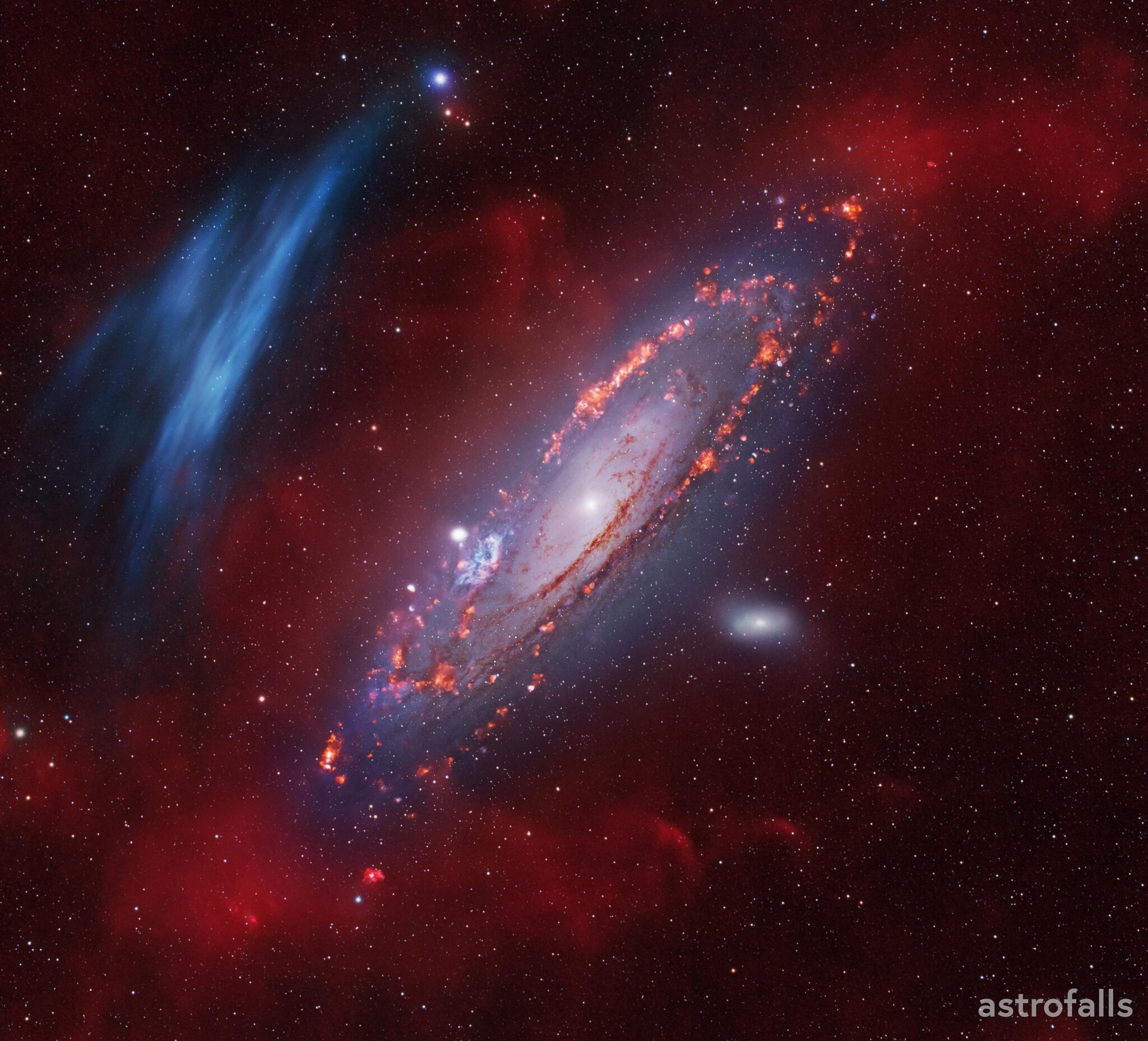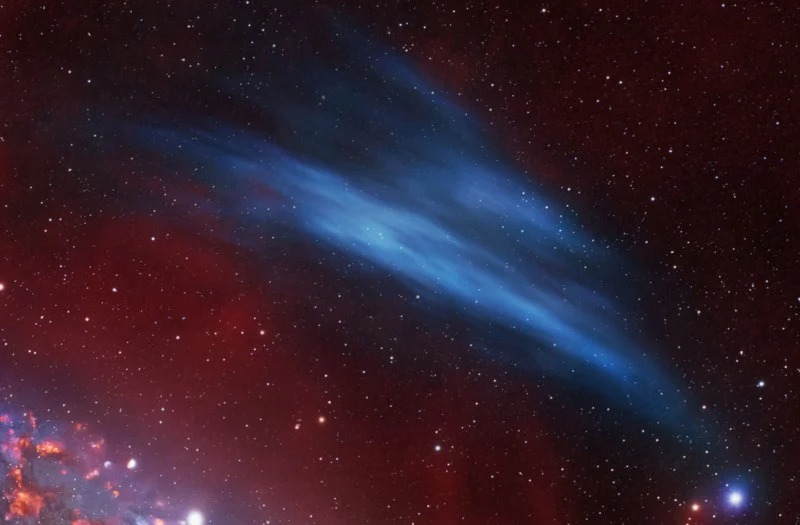The Andromeda galaxy is the closest to the Milky Way and is located at a distance of 2.5 million light-years. But on the scale of the Universe it is very close. That is why the Andromeda galaxy is one of the most photographed celestial objects. Therefore, it rose the question of how, in general, astronomers did not notice the giant nebula, which was in plain sight all this time.

Hidden find among artifacts and noises
While photographing the galaxy using the Oxygen-III filter, astrophotographers Bray Falls, Yann Sainty, Marcel Drechsler and Xavier Strottner noticed some amazing distortions that prevented them from getting clear images of the Andromeda disk.
“We can use special filters called narrow-band filters to look at light only from certain gases. But things like gradients, lens flare, or poor flat frames can create artifacts that make it difficult to get clear photos. During the redaction, we determined that we really noticed something interesting, which required additional verification in order to exclude potential sources of errors,” says astrophotographer Bray Falls.
Subsequently, it turned out that the ghostly images that appeared on the cameras of astrophotographers were not aberrations, but an oxygen nebula located very close to the studied Andromeda galaxy.

Hydrogen is the dominant gas in the Universe. Most astrophotographers use an H-alpha filter. The other two narrowband filters are oxygen III (O-III) and sulfur II. The O-III filter is often overlooked because it is exposed to light pollution and may be incredibly weak in the night sky.
Oxygen Nebula Research
Falls and Sainty directed their Takahashi FSQ-106 telescopes with a gearbox .73 and a QHY600 CMOS sensor at the remote Sierra Observatory. In total, they recorded 110 hours of data, taking countless images with exposures from 5 to 10 minutes, trying to determine the details of the pale oxygen nebula. But the first pictures were heavily polluted with noise and artifacts. However, after the couple edited the photos, they were able to see the oxygen nebula in all its beauty without impurities.
“We’ve both been able to make sure that this is a real thing, really existing around the Andromeda galaxy,” Falls adds.
Despite the stellar work of Falls and Sainty on the image of the oxygen nebula, scientists are not yet in a hurry to draw conclusions on the cosmic find. But this is a normal situation with such discoveries that require more detailed research by scientists for final confirmation.
According to iopscience
Follow us on Twitter to get the most interesting space news in time
https://twitter.com/ust_magazine

